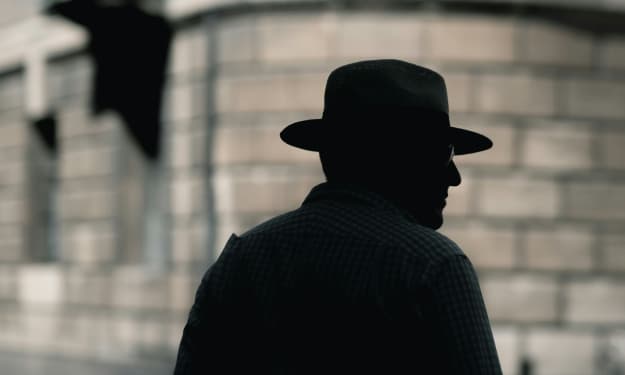
The chilling reality of living in the crosshairs of a serial killer came to the forefront in Gainesville, Florida, during the ominous days of August 1990. Infamous serial killer Danny Rolling claimed the lives of five students in a gruesome killing spree that shocked the nation. What makes this narrative even more haunting is the twisted advice Rolling offered on how to avoid becoming a victim. This article delves into the disturbing details of Rolling's heinous crimes, the harrowing events in Gainesville, and the unsettling insights into his mindset.
August 1990 marked a dark chapter in the history of Gainesville, Florida, as the idyllic college town became the backdrop for a horrifying sequence of events. Over the course of four harrowing days, the community witnessed a series of murders that would leave an indelible scar on the collective consciousness. Five students, bright with promise and potential, fell victim to the brutality of a serial killer whose name would forever be associated with terror: Danny Rolling.
Understanding the motivations and the disturbing psyche of a serial killer like Danny Rolling is a daunting task. Born in Shreveport, Louisiana, Rolling's troubled upbringing laid the foundation for a disturbed adulthood marked by violence and chaos. As the Gainesville murders unfolded, the true extent of Rolling's depravity became shockingly apparent, leaving investigators and the community grappling with the aftermath of his brutal acts.
Amidst the investigation into the Gainesville murders, a disturbing revelation emerged – Danny Rolling had left behind an unsettling message, a twisted guide on how to avoid falling prey to a serial killer. The ghastly irony of a murderer offering advice on survival added an eerie layer to the already macabre narrative. This article scrutinizes the chilling details of Rolling's advice and the unsettling questions it raises about the mind of a killer.
The victims of Danny Rolling's killing spree were young students with bright futures ahead of them. Christina Powell, Sonja Larson, Christa Hoyt, Tracy Paules, and Manuel Taboada were snatched from their lives in the most gruesome manner, their deaths sending shockwaves through the community. The brutality and randomness of the murders compounded the terror, leaving Gainesville residents in a state of fear and disbelief.
The crime scenes left in the wake of Rolling's murderous rampage were gruesome tableaux of horror. Each victim was subjected to unspeakable acts of violence, their lives extinguished in the most brutal fashion. Investigators faced the daunting task of piecing together the evidence, unraveling the method to Rolling's madness, and attempting to bring justice to the grieving families and a terrified community.
Danny Rolling's warped advice on avoiding murder, left amidst the carnage he wrought, serves as a chilling testament to the mind of a killer. The so-called "Rules of Murder" offered a morbid insight into the predatory nature of a serial killer and the calculated strategies employed to instill fear in the hearts of potential victims. This article meticulously dissects the content of Rolling's manifesto, exploring the disturbing guidelines that shed light on his deranged perspective.
Rolling's advice, despite its sinister origin, provides a unique opportunity to delve into the mind of a serial killer and understand the tactics employed to select and subdue victims. From securing one's residence to the psychological manipulation of potential targets, each recommendation serves as a macabre lesson in survival psychology. Analyzing these insights offers a glimpse into the predator's mindset, raising crucial questions about the nature of violence and the factors that contribute to victim selection.
As law enforcement grappled with the aftermath of the Gainesville murders, a relentless pursuit of justice began. The investigation, led by dedicated detectives, forensic experts, and profilers, sought to unmask the Night Stalker terrorizing Gainesville. The race against time to apprehend Rolling before he could claim more victims intensified, weaving a narrative of suspense and determination.
The intense manhunt for Danny Rolling culminated in his capture on September 8, 1990, in Ocala, Florida. His arrest marked the end of the reign of terror that had paralyzed Gainesville for weeks. The capture of the Night Stalker brought a sense of relief to the community, but questions lingered about the motives behind the brutal murders and the unsettling advice left in their wake.
The legal proceedings that followed Rolling's capture provided a forum for justice to be served. The trial brought forth the horrific details of the Gainesville murders, as survivors and witnesses recounted the nightmare they had endured. Rolling's defense, marked by his erratic behavior and attempts to represent himself, added a surreal dimension to the courtroom drama. The verdict and sentencing were moments of closure for some, but the scars left by the Gainesville murders would forever linger.
The Gainesville murders of 1990 left an indelible mark on the collective psyche of the community. The scars of terror, the loss of innocent lives, and the unsettling advice left by the killer created a legacy of horror that endured long after the trial concluded. This article explores the psychological impact of the Gainesville murders, examining how the community coped with the trauma and sought to heal in the aftermath of the Night Stalker's reign.
The Gainesville murders orchestrated by Danny Rolling remain etched in the annals of true crime, a chilling reminder of the capacity for darkness within the human soul. Unraveling the details of Rolling's heinous acts, analyzing his disturbing advice, and exploring the impact on the Gainesville community provides an opportunity to seek understanding in the face of incomprehensible horror. As we confront the depths of human depravity, we must also strive to comprehend the resilience of the human spirit and the collective strength that emerges from the shadows of tragedy.






Comments
There are no comments for this story
Be the first to respond and start the conversation.